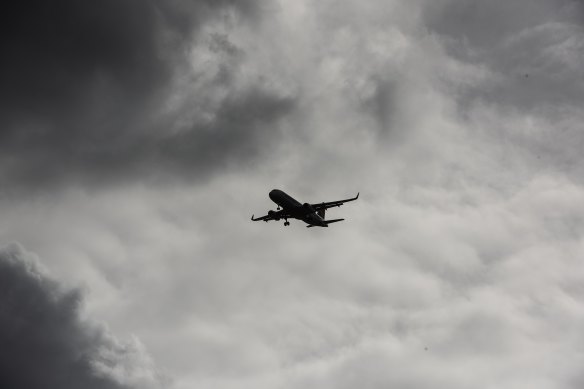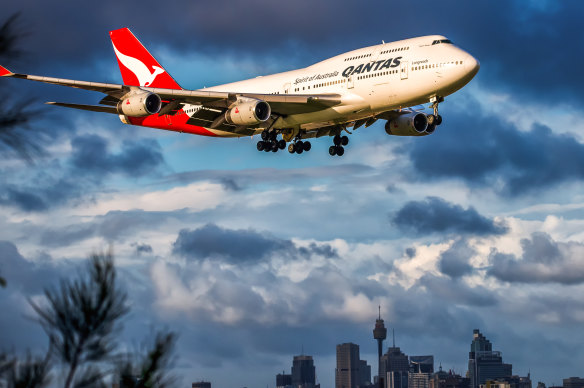By Angus Dalton
Severe turbulence flung passengers and crew around the cabin of a Singapore Airlines flight from London to Singapore, forcing an emergency landing in Bangkok on Tuesday.
Fifty-six Australians were among the 211 passengers and 18 crew on board flight SQ321 when it made the landing after falling into an air pocket while breakfast was being served. One passenger died and many others were injured, some severely.
Last July, chaos erupted on a flight into Sydney from Honolulu when a sudden bout of turbulence threw passengers out of their seats. Four were hospitalised and some passengers almost hit the roof.
The incidents could be a sign of what’s to come as climate change intensifies clear air turbulence – which is invisible to the eye, doesn’t show up on radar and appears to bluster out of nowhere – along the world’s busiest flight routes.
Severe turbulence over the North Atlantic increased by 55 per cent since 1979 according to a recent University of Reading analysis.
The study also showed areas of the South Atlantic and flight paths over Europe, the US and the Middle East were becoming bumpier.
Severe turbulence, experienced by these travellers flying between Kosovo to Switzerland, is very rare – but it’s increasing due to climate change.Credit: Nine News
The study didn’t show evidence of a drastic increase in turbulence in Australian airspace, but plenty of the places we fly over to get to Asia and America are reliably rocky.
Climate change is affecting jet streams, which are snakes of fast-moving wind that blow at the same altitude as commercial planes, and increasing upward bursts of wind known as wind shear, which inflict bouts of turbulence on aircraft.
Where is turbulence most likely to strike?
Australians commonly encounter turbulence when flying across the continent, between Perth and Sydney for example, due to blustery air surrounding jet streams over Australia.
Travellers flying to Asia or America are likely to experience bumps when crossing the tropics, which are often stormy and plagued with turbulence year-round.
Turbulence forecast service Turbli ranked the 10 bumpiest flight routes in Oceania based on the eddy dissipation rate, or EDR, which turbulence expert and atmospheric scientist Professor Todd Lane said is the state-of-the-art method of measuring turbulence intensity.
“What an aircraft is experiencing when it’s bumping around is actually small variations in the wind that cause the aircraft to go up and down,” Lane said.
“It’s not changes in the horizontal wind, but upward and downwards wind that push the aircraft up and down and make a ‘bump’.
“The eddy dissipation rate is measuring the energy of those small variations in the wind.”
EDR data is collected by various types of aircraft, including commercial planes.
What causes turbulence?
Thunderstorms are a common but easily dodged source of turbulence because they can be seen by pilots through the windshield and on the flight radar.
Lane said the Sydney-Brisbane route likely clinched the top spot due to the high number of La Niña thunderstorms over the past few years (2022 was Sydney’s wettest year on record and Brisbane copped almost double its annual rainfall in the same year).

Thunderstorms are common but easily dodged sources of turbulence. Clear air turbulence is invisible and difficult to avoid.Credit: Steven Siewert
“If I were to speculate, I would say it was probably related to the storms. Both Sydney and Brisbane get quite severe thunderstorms,” Lane said.
He’s currently studying thunderstorm turbulence and said storm cells can generate clear air turbulence far away by generating “waves” throughout the atmosphere.
“A thunderstorm will generate these ripples in the wind that propagate away from the storms into the clear air. These ripples are invisible and they are actually waves, just like waves in the ocean. When those waves break, they can generate turbulence at least 100 kilometres from the storm.”
That’s something retired pilot Ali Al-Wahabi knows well. He flew international commercial aircraft all over the world in his 45-year career. His most memorable bout of turbulence occurred flying into the notorious Kai Tak Airport in Hong Kong.
“[The turbulence] was very, very severe,” Al-Wahabi, now head of ground theory at Sydney Flight College. “We ended up, after four attempts, managing to put it on the ground. It was caused by a typhoon brewing 150 kilometres away from Hong Kong.”
Another important source of turbulence are jet streams, rivers of fast wind at the top of the troposphere (the first layer of the atmosphere, about 12 kilometres high on average). They’re created by upwelling warm air from the tropics meeting cool polar air, and the winds are ushered eastward by the centrifugal force of the earth.
Eastward travelling aircraft that ride these streams can shave off hours of flight time. But on the outskirts of jet streams, wind shear and turbulence abounds. (As one pilot put it, picture the churning edges of a fast-flowing river as the water swirls against the riverbank).
The wind in jet streams can reach 400 kilometres per hour. Increasing temperature gradients between the equator and the poles at the altitude jet streams flow have destabilised the wind currents and boosted vertical wind shear, generating more clear air turbulence.
Mountains and islands also disrupt wind flow and can generate oscillating waves in the atmosphere that cause turbulence. Rising parcels of hot air can also rattle aircraft in what is known as convective turbulence.
Can we do anything about the increasing turbulence?
The recent study into climate change’s effect on turbulence found the annual duration of light turbulence rose from 466.5 to 546.8 hours, a jump of 17 per cent since 1979. Moderate turbulence was up 37 per cent and severe turbulence increased by 55 per cent, although that’s off a low base – it increased from 17.7 hours to 27.4 hours.
When pilots hit a rough patch they slow the plane to the “turbulent air penetration speed”, a velocity halfway between an aircraft’s maximum and minimum speed, Al-Wahabi said.
“They don’t want it to be near the maximum speed because that could affect the structure of the aircraft. And they don’t want you to go into the lower part of the flyable speed because that will bring you closer to the stalling speed of the aircraft. So that next [middle speed] will give you a very comfortable cushion.”

Sydney to Brisbane was the bumpiest flight path of 2022 according to turbulence forecasting site Turbli.Credit: iStock
Planes are built to withstand stresses far greater than they’re ever likely to experience in decades’ worth of flight time. A pilot’s main concern is usually for the passengers and crew jumbling around behind them – turbulence is the main source of injuries during flight due to unbelted passengers and falling luggage.
Turbulence alone can’t break apart planes or cause crashes. But it can damage the interior cabin and increase wear-and-tear on aircraft, which require more frequent repairs. The damage and delays caused by turbulence costs the US aviation industry between $150 million and $500 million a year.
Sitting in the middle of the aircraft over the wings increases your chances of a smoother flight (the back end of the cabin cops the worst bumps). Al-Wahabi said flights are generally smoother earlier in the morning and late in the evening, when the heat of the day isn’t a factor in causing extra bluster.
Although clear air turbulence is hard to predict and avoid (it’s usually not detected until someone flies through it and alerts other pilots) Lane believes our detection capabilities will improve in coming years.
“I would suggest that the rate of improvement of forecasts and techniques to avoid turbulence will actually be quicker and more effective than any changes in turbulence,” Lane said.
“So if anything over the coming decades, we’ll see aircraft experiencing less turbulence because of the improved avoidance methods, even if we have increases in atmospheric turbulence.”
Enjoyed this article? The Examine newsletter explains and analyses science with a rigorous focus on the evidence. Sign up to get it each week.